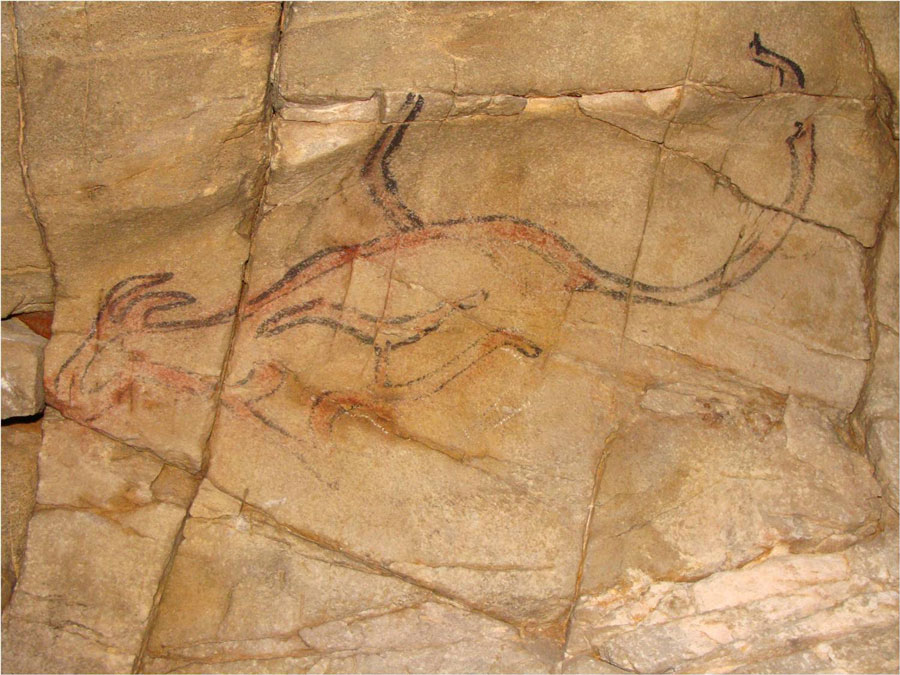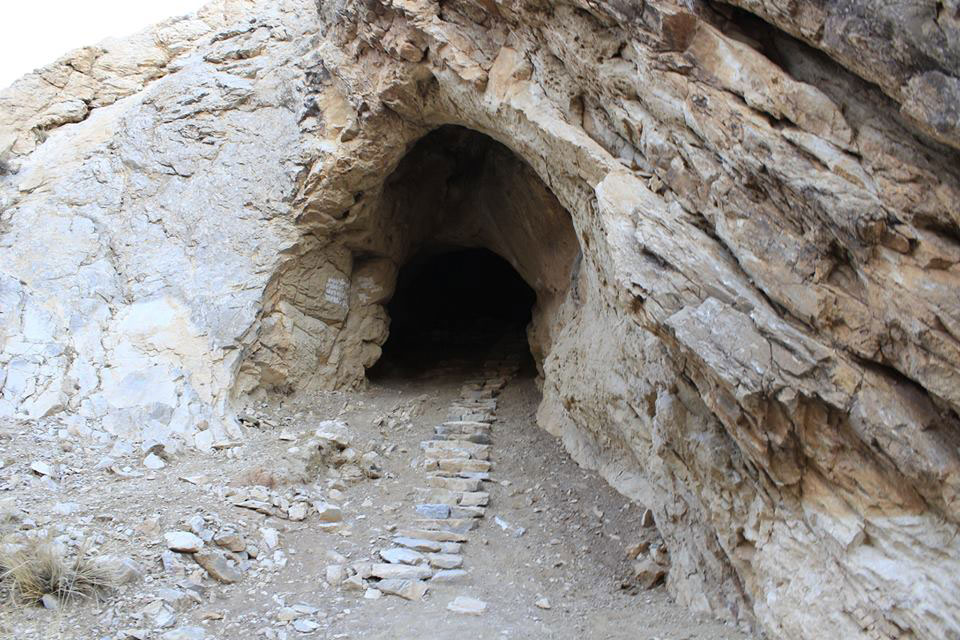(+976) 11-354662
| info@tourmongolia.com | sales@tourmongolia.com
The Rock Painting monuments found on the territory of Mongolia and survived to date from the early iron age bring us the message of our ancestors who lived 5000-3000 years ago. The monuments allow us to read ancient history of Mongolia. The capable depiction of Horse-Cart, Ox-Cart attract the attention of researchers even today. While the earliest Rock Paintings depict wild beasts and birds, with the passage of time the ability of depicting gets improved, the paintings shows people’s life to a greater extent alongside with beasts. These works illustrate hunting scenes, sowing of crops, domestication of animals, ox-cart carriage, and even the intimate relations of men and woman.

The Rock Paintings of Tsagaan Salaa are located in western Mongolia. The site is inside Altai Tavan Bogd National Park and was approved as part of a larger Petroglyphic Complexes of the Mongolian Altai World Heritage Site along with The Upper Tsagaan Gol Complex in 2011.
Within an area of roughly 15 km reside approximately 10,000 figures on the southern side of the White River Valley. Dating from the Neolithic to the Bronze Age, this massive collection of pictures primarily depicts livestock and big game both individually and in large herds. These rock paintings are rich not only in their numbers, but also in meanings, expressiveness, subject and compositions. They are important monuments of the art of the transition from ancient hunter-gatherer societies to livestock breeding and the beginning of the classic nomad economy in Mongolia.
This cave was first discovered in 1951 by O.Namnandorj who had great interest in rock art inside the Cave. The cave is located at an altitude of 2100-2400 meters above sea level at 25 kilometers west of the Mankhan soum center of Khovd province. Carbonate rocks, white-gray limestone, marble, are 15 meters in height, 20 meters in the ceiling and the ceiling is outside the interior of the ceiling, top of the dome. When the cave walls are burned in a flame fire, they prove to have lived in the cave for a long time. There are also historical monuments with over 40,000 years ago. The paintings hit with a chisel and then painted with red dirt paint. In the cave walls and roofs, a variety of animals are described in the form of Ostriches, Turkeys, Cranes, Camels, Mammoth, Buffalo and Snakes.


A rock painted on rocky slopes of the Shiveet Khairkhan Mountain in the Tsengel soum of Bayan-Ulgii province. Shiveet Khairkhan’s rock painting complex with thousands of pictures of Central Asian rock painting center is located in the Khar Salaa and Tsagaan Salaa river valley. This beautiful valley surrounded by high altitude mountains, rich in flora and fauna, is a part of the “Altai Tavan Bogd” National Park. Most of the rock paintings are located at the lower part of the Shiveet Khairkhan Mountain and rocks scattered on the east coast of the Khar Salaa River. The total area of the paintings is approximately 10-12 square kilometers. The location of the paintings is generally in line with ancient and modern migratory routes, which is one of the features of the Shiveet Khairkhan rock paintings. The Shiveet Khairkhan’s remains were left behind by ancient hunters and herders. Here is a description of the specific warrior and armed hunters. From time to time, images of the paintings were created by ancient Mongolian Altai people from a period of bronze to ancient Turkic period.
Rashaan Khad is situated near the southeast end of Mount Binder in Batshireet Soum, Khentii Aimag. Archeologists signify this complex, which belongs to the period between Stone Age and the 16th century, as an important representative of memorials in eastern Mongolia. The surrounding area is full of cave paintings, various kinds of inscriptions, stone tools and graves of the Bronze Age, the Iron Age as well as the Hun period. Besides them, there are also historical memorials belong to the Bronze Age, the Khitan period and the Mongol Empire. In this cave there are stencil paintings of games and a human figure, hundreds of seal imprints of tribes and over 20 inscriptions in Khitan, Arabian, Persian, Tibetan, Chinese as well as Mongolian script. Hundreds of animal figures, stamp imprints and inscriptions in various scripts all of which belong to the Paleolithic period or the Mesolithic period are found on Rashaan Khad. During his expeditions in 1943 and 1968, Kh.Perlee discovered 180 images on the foreside, over 40 on the backside and about 50 on the crest of a granite stone facing east. On the rock west of Rashaan Khad, a high finned, a short, fat legged and a Long Trunked Mammoth was depicted. This figure was much same as that of the Kapovoi cave in Ural and caves in Europe. On another flat rock Rhinos flocked in 3 were depicted in huge with a high fin, short legs and a special attention was put on a tusk and horns over its nose.


The Del Uul Mountain, stretches 25 km from east to west and is located in the territory of Ulziit soum, Dundgobi province. From its lower base to the peak the eastern face of the mountain is covered with Petroglyphs of various types of animals, human beings and symbols that engraved in different historical time period. Animal images such as Ibex, Horses riders, Camel, and anthropomorphic images are the most common.
The Bichigtiin Am Petroglyphs are entirely concentrated on a one small rocky mountain rising abruptly from the deep valley of Bichigtiin Am, Ikh Bayan mountain of Bayanlig soum, Bayankhongor province. There are hundreds of images of human beings, animals and symbols there were engraved by the prehistoric people on the rocks. The first petroglyphs were likely to have been made approximately 3000 years ago BC and people had continued to add illustrations until the 8th century CE.
Men riding horse or camel, cattle and camel herds as well as hunting scenes and men with carts are a common image among these rock arts. Men are illustrated riding horse with or without a saddle. An image of cattle pulling a plough and man directing it is one of the rarest artifacts related to farming found in the Mongolian Gobi region.


Tsagaan Agui or White cave is located 40 km in the north east of Bayanlig soum Bayankhongor province in southern Mongolia. The cave has a length of 44m. It has four large chambers which are connected through narrow corridors. This crystal cave is famous in the world by its beauty and trace of ancient people whom were living 700,000-800,000 years ago. Tsagaan Agui cave is protected by the Mongolian government in 1998.